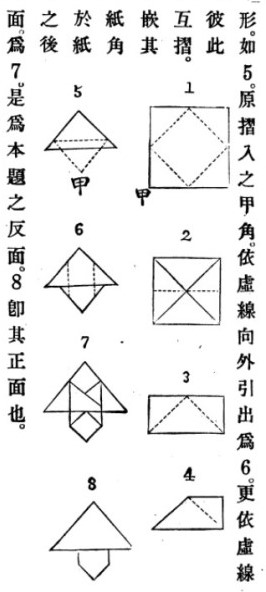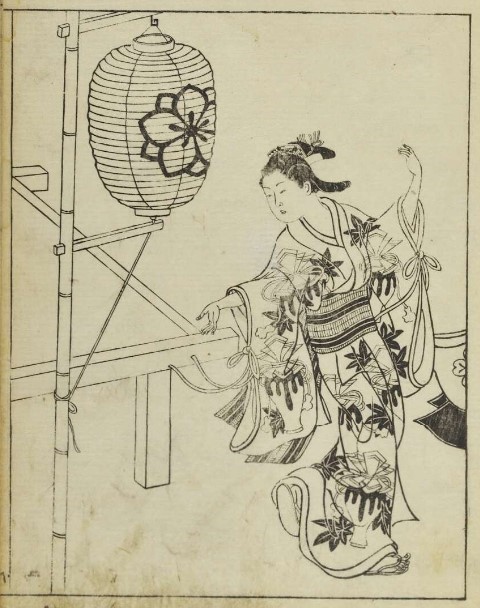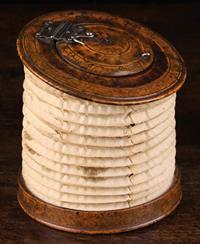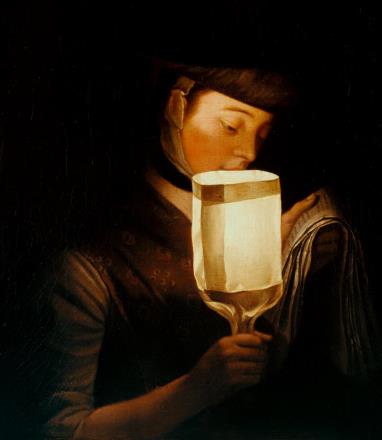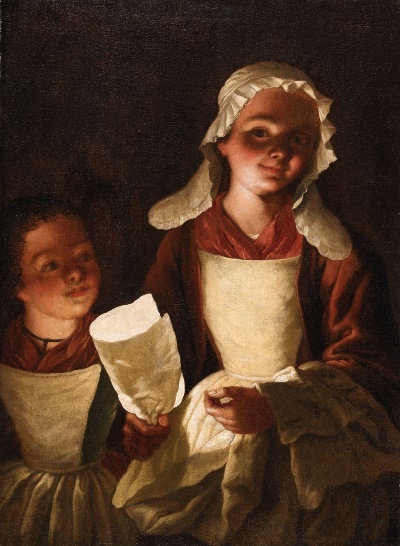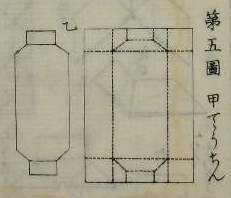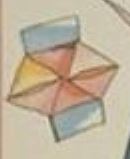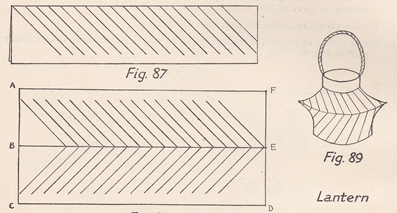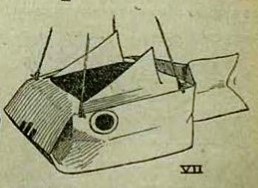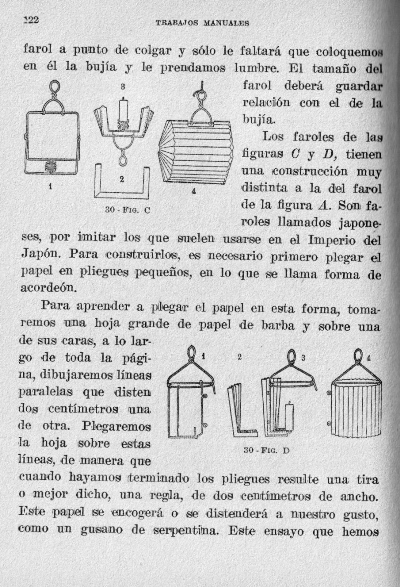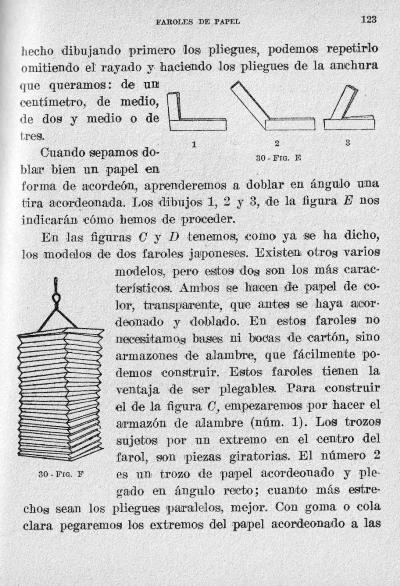| The Public Paperfolding History Project
Last updated 7/1/2023 x |
|||||||
| Paper Lamps / Lanterns / Lanthorns | |||||||
| This
page is being used to collect information about the
history of folded paper lamps, lanterns or, in old
English, lanthorns. Please contact me if you know any of
this information is incorrect or if you have any other
information that should be added. Thank you. Information about the use of Waterbombs as lanterns can be found here. ********** In China According to Tsien Tsuen-Hsuin in 'Science and Civilisation in China, Volume 5, Part 1: Paper and Printing': '
********** 1914 A simple design representing an electric lamp appears in 'Zhe zhi tu shuo' (Illustrated Paperfolding), compiled by Gui Shaolie, which was published by the Commercial Press in Shanghai in Ming guo 3 (1914).
********* In Japan According to Edo Tegaki Chochin | Traditional Crafts of Tokyo | Bureau of Industrial and Labor Affairs Tokyo Metropolitan Government 'During the following Azuchi-Momoyama Period (1573-1596), chochin adopted the form of a skeleton of thin split-bamboo hoops covered by paper. Such lanterns came equipped with a flat base for housing a candle. This design resulted in lanterns that could be expanded and collapsed at will.Chochin use subsequently became widespread during the Edo Period (1603-1868).' However, the earliest evidence I have found for the use of such a lantern is from 1731 (see below). ********** 1731 This print by Nishikawa Sukenobu from 'Ehon tokiwa gusa', which was published in 1731, shows a collapsible paper lantern.
********** In Europe and the Americas 1654 In his book 'Physiologia Epicuro-Gassendo-Charltonia', published in 1654, Walter Charleton wrote, 'Afterward, fold the cloth, as Boyes do paper for Lanterns, or lay it in waves or pleights of different magnitude ...'
********** 1676 'Sports and Pastimes' by J M, which was printed by H. B. for John Clark, at the Bible and Harp in West-Smithfield, London in 1676, describes how to make and work 'A sheet of Paper called Trouble-wit', the text of which contains several mentions of paper lanthorns: 'then pinch it a quarter of an inch deep, in the manner as you pinch a paper Lanthorn, that is in pleats like a ruff ...' 'In the fashion of a dark Lanthorn ... In the fashion of a Lanthorn with a rose at each end ...' ********** c1720 to1740 The collapsible paper and wood travel lantern pictured on the left below is said to be dateable to c1720 to 1740 by the circular brass ring handle on its lid. See further information here. However, similar items (see for instance below right) are said to be of widely varying dates in other sources.
********** 1752 In his 'Memoirs of Sir Isaac Newton's Life', published in 1752, William Stukely wrote: 'He was particularly ingenious at improving all thir usual diversions. for instance, in the fabrick of thir paper kites; in finding out thir proportions, figure, the best point of fastning the string, in how many places, the length of the tail, & the like. & as an omen of the sublimity of his discoverys, he invented the trick of a paper lanthorn with a candle in it, ty'd to the tail of a kite. this wonderfully affrighted all the neighboring inhabitants for some time, & caus'd not a little discourse on market days, among the country people, when over thir mugs of ale.' And: 'The paper lanthorn too was an invention of his own, made of crimpled paper, which he used to light himself with, to school in dark winter mornings: then flattening it, so as that he cd. put it into his pocket. but the affair of fastning this lighted lanthorn to the tail of a kite, gave a handle for that famous episode in Hudibras, of Sydrophel & his comet.' Source: Revised Memoir of Newton (ox.ac.uk). Isaac Newton was born in 1642 and died in 1727. *** Reference to Newton's paper lanterns is made in 'The Boy's Treasury of Sports, Pastimes and Recreations' by Samuel Williams, which was published by D Bogue in London in 1844.
********** 1765 - 1782 This painting by Henry Robert Morland (1716–1797) known as 'A girl singing ballads by a paper lanthorn' is said to date from between 1765 and 1782.
********** 1799 This somewhat similar painting, said to be 18th Century Netherlandish School shows two young girls with a much less sophisticated paper lantern.
********** The Long Lantern - 1884 onwards
********** The Lantern - 1884 onwards
********** The Fold and Cut Lantern - 1910 onwards
********** 1916 An article in Los Muchachos of 11th June 1916 contains instructions for making a novelty lantern, 'El Farol-Pez' (The Fish Lantern), by folding and cutting a paper bag. The text calls it 'un bonito farolillo chinesco' (a pretty Chinese lantern).
*********** 1923 'Trabajos Manuales y Juegos Infantiles' by Francisco Blanch, which was published by I. G. Seix y Barral Hermanos S.A.- Editores in Barcelona in 1923, contaims seceral designs for Pleated Paper Lanterns.
********** |
|||||||

